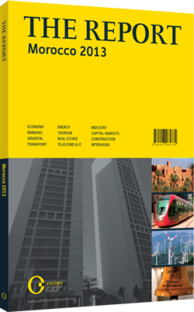Staking a claim: Foreign direct investment helps to spur sector expansion
With the second-largest insurance market in Africa, Morocco has attracted considerable foreign involvement in the sector. Annual levels of foreign direct investment (FDI) have varied widely, from Dh21.4m (€1.90m) in 2007 to Dh451.6m (€40.1m) in 2009, and back down to Dh301.9m (€26.8m) in 2010. And yet, foreign companies have an established presence on the domestic market. Axa Assurance Maroc was created in 2000 through a merger between the French company’s local subsidiary, Axa Al Amane, and Compagnie Africaine d’Assurances, and has since become the third-largest overall insurer on the domestic market.
MAJOR PLAYERS: La Marocaine Vie was acquired by French bank Société Générale Group in 2001 through its life insurance company, Sogécap, and local subsidiary, Société Générale Maroc. Zurich Assurance Maroc, a subsidiary of Swiss-based Zurich Financial Services Group, has been in the market since the 1950s and has carved out a 4.4% overall market share. In 2005 the French bank Crédit Mutuel purchased a 20% stake of the second-largest insurer, RMA Watanya.
FDI has been critical to supporting Moroccan insurers’ expansion into foreign markets. Most recently, a joint venture launched in June 2011 by Morocco’s Wafa Assurance and the European group Inter Mutuelles Assistance (IMA) created Wafa IMA Assistance, bringing the total number of insurers to 17. The operator started with a capital of Dh50bn (€4.44bn), 35% of which was provided by IMA. The company launched its services with a comprehensive product covering life, casualty and automobile insurance, aimed particularly at the Moroccan community living in Europe and North Africa. With an estimated 3.3m Moroccans residing abroad, this segment of the population presents an interesting growth opportunity for local insurers.
CNIA Saada has seen high levels of FDI via its parent company, the holding company Saham Finances, following the acquisition of regional insurance group Colina in 2011, which spread CNIA Saada’s reach to 12 African countries. In March 2012 the International Finance Corporation (IFC) and the IFC African, Latin American and Caribbean Fund agreed to invest a combined $125m in Saham Finances to support the insurer’s plan to expand further into regional markets.
In the same month, Dubai-based private equity firm Abraaj Capital invested an additional $125m in the holding company, as part of Abraaj’s strategy to capitalise on growing Middle Eastern and African insurance markets. Saham officials indicated that these investments would allow the company to engage in the next phase of its regional expansion programme. In June 2012 Saham Finances negotiated the purchase of an 81% stake in LIA Insurance, a Lebanese insurance provider, from Bank Audi.
FINANCE CITY: The establishment of Casablanca Finance City (CFC), a zone dedicated to financial and business services, is expected to drive further foreign investment to the insurance sector and other financial services. The Moroccan Financial Board has identified a number of fiscal incentives available to companies that locate themselves in CFC, which are expected to attract attention from actors throughout the financial sector. The Moroccan Financial Board, which manages the CFC, has been marketing the zone to firms in the Gulf, and particularly in the UAE, in an effort to establish Morocco as a gateway to the financial and insurance markets of North and West Africa.
Abu Dhabi Investment Company (Invest AD) obtained a CFC operating licence in mid-2012 to increase access to North African markets. Invest AD’s office in the CFC will be operating a joint venture launched in November 2012 with Attijariwafa Bank, which consists of a managed fund to invest in African-listed equities. BMCE bank, RMA Watanya’s partner for bancassurance sales, has also indicated it will establish an office in the CFC.
In addition to an attractive fiscal context, the internationalisation of Morocco’s insurance sector, as a number of local insurers establish branches or acquire subsidiaries in the region, should certainly help to continue to drive foreign investment in the medium term.
You have reached the limit of premium articles you can view for free.
Choose from the options below to purchase print or digital editions of our Reports. You can also purchase a website subscription giving you unlimited access to all of our Reports online for 12 months.
If you have already purchased this Report or have a website subscription, please login to continue.

